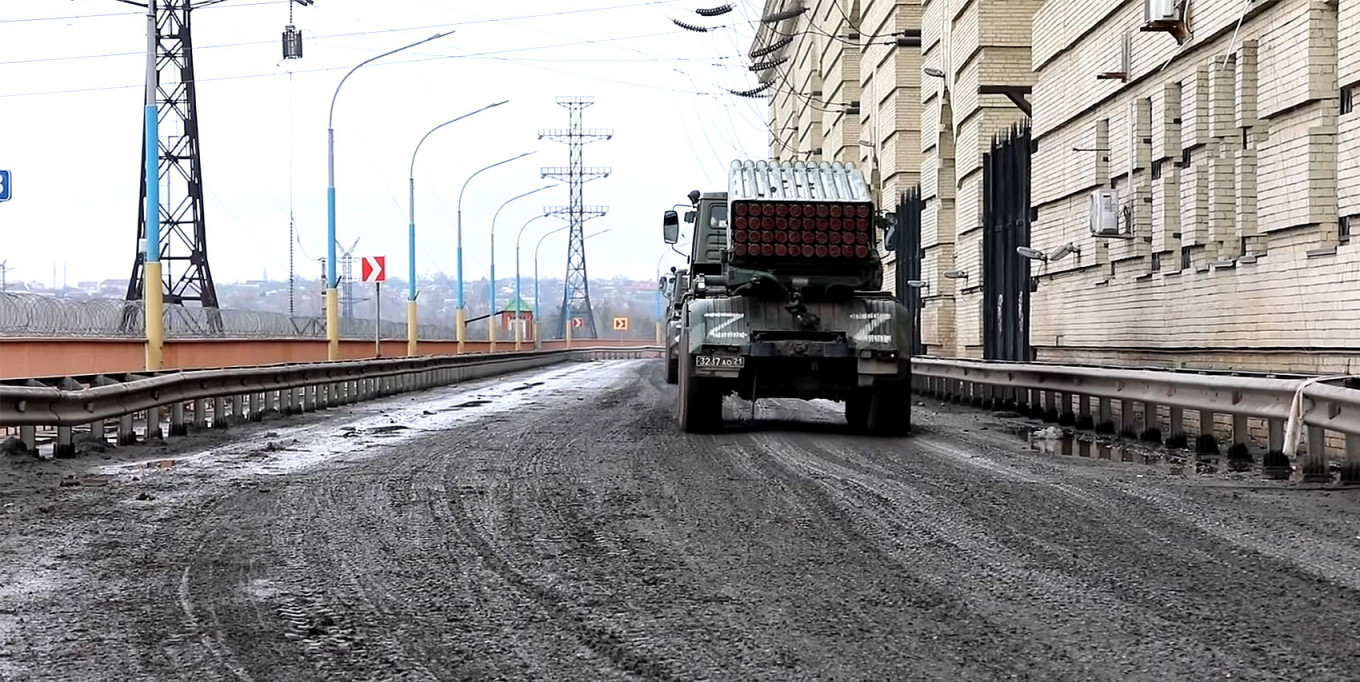The Kakhovka dam in southern Ukraine has become the focus of intense speculation as Kyiv’s forces have pushed forward with a counteroffensive in the Kherson region in recent weeks.
And this speculation has only intensified since Russia announced Wednesday that it would withdraw its forces from the right bank of the Dnipro River, abandoning the city of Kherson.
Russia has repeatedly accused Ukraine of attacking the dam, with Russia’s military commander in Ukraine, Sergei Surovikin, alleging last month that Kyiv was preparing a “massive missile strike.”
Ukrainian officials have rejected claims they would deliberately target civilian infrastructure. And President Volodomyr Zelensky has warned Russian forces could blow up the dam and its hydroelectric facility themselves in what he said would be a “terrorist” attack.
The finger-pointing from both sides has sparked fears that the dam could be deliberately destroyed — an event that experts say would likely inflict mass destruction and spark a humanitarian crisis across a swathe of southern Ukraine.
Why is the Kakhovka dam significant?
Built in 1956, Kakhovka is the southernmost of six hydroelectric plants constructed along the Dnipro River during the Soviet period. Further downriver from Kakhovka is a deep-water channel extending to the Black Sea.
Standing about 30 meters tall and over 3.2 kilometers wide, the dam stores roughly the same amount of water as the Great Salt Lake in the U.S. state of Utah.

One of just three major crossings along the Dnipro in Kherson region, the dam has been a critical supply line for Russian forces fighting on the river’s right bank since the start of the invasion of Ukraine in February.
What is happening there?
Ukrainian forces have repeatedly targeted the road and rail bridge over the dam which the Russian military relies on to deliver supplies to units in the occupied city of Kherson.
If Russia does in fact withdraw all its troops to the left bank of the Dnipro River, the dam and the bridge could become part of the frontline between the two armies.
Satellite images published in August showed several craters in the road bridge, which apparently forced Russian troops to construct a number of pontoon crossings nearby.
Russian state media reported Sunday that the dam had been damaged in a Ukrainian strike using U.S.-supplied HIMARS missiles, but the claim could not be independently verified.
While the Russian withdrawal from Kherson region does not necessarily make the blowing of the dam more likely, there are precedents for retreating armies destroying infrastructure. .
“There are lots of examples throughout history of retreating forces blowing up dams in an effort to delay their opponents, including Soviet efforts to slow the German advance through Ukraine in 1941,” said James Black, a defense analyst at RAND Europe, part of the non-profit U.S. RAND Corporation.
Is Russia preparing to destroy the dam?
The order given by Defense Minister Sergei Shoigu for Russian forces to withdraw from the right bank of the Dnipro in Kherson region had long been anticipated by military analysts, who predicted that the Russian position would become untenable amid consistent military pressure from Ukraine.
And, as the Ukrainian army has slowly advanced toward the river, officials in Kyiv have stepped up their warnings of a potential Russian false-flag operation to destroy the dam.
According to Ukrainian intelligence, Russia first mined the dam back in April and added more explosives to the floodgates and supporting structures last month.
Destroying the dam and its hydroelectric station, which provides electricity to tens of thousands of Ukainians, would align with Russia’s efforts to knock out critical Ukrainian energy infrastructure in recent weeks. And some suggest it could be seen in Moscow as a move that would fortify its positions in southern Ukraine.

But most experts warn that blowing the dam would not give Russia any significant military advantages and would jeopardize water supplies to Russian-controlled areas.
Russian officials have denied that they are planning to destroy the dam, accusing Ukraine of plotting an attack themselves. The commander of Russia’s forces in Ukraine, General Sergei Surovikin, said last month that Ukraine had repeatedly used U.S.-supplied HIMARS missiles to attack the dam and alleged that another large attack could take place.
What would happen if the dam were blown?
The consequences of a major attack on the Kakhovka dam would depend on how much of the structure was destroyed, experts told The Moscow Times.
In a catastrophic scenario, destroying the dam could send a highly destructive flood wave down the Dnipro River, causing severe flooding in large areas of southern Ukraine. Backswell would also likely flood the Inhulets River, a tributary of the Dnipro.
However, terrain levels mean the flooding would likely be worse on the Russian-held left bank of the Dnipro, making a detonation of explosives on the dam an unlikely move for Moscow.
“[Destroying the dam] would mean Russia essentially blowing its own foot off,” military analyst Michael Kofman said on the War on the Rocks podcast last month.
“[It] would flood the Russian-controlled part of Kherson [region]… much more than the western part that Ukrainians are likely to liberate.”
And the secondary effects of blowing the dam could be just as severe for Russia.
Lowering the river level behind the dam threatens both water supplies to Moscow-annexed Crimea and risks cutting off access to cooling water for the Russian-controlled nuclear power plant in Ukraine’s Zaporizhzhia region.
“Blowing the dam would also provoke international outcry,” analyst Black told The Moscow Times. “While it may slow Ukrainian troops’ advance in the south in the short-term, it could serve to further stiffen Ukrainian resolve and will-to-fight against Russian occupation in the long run.”